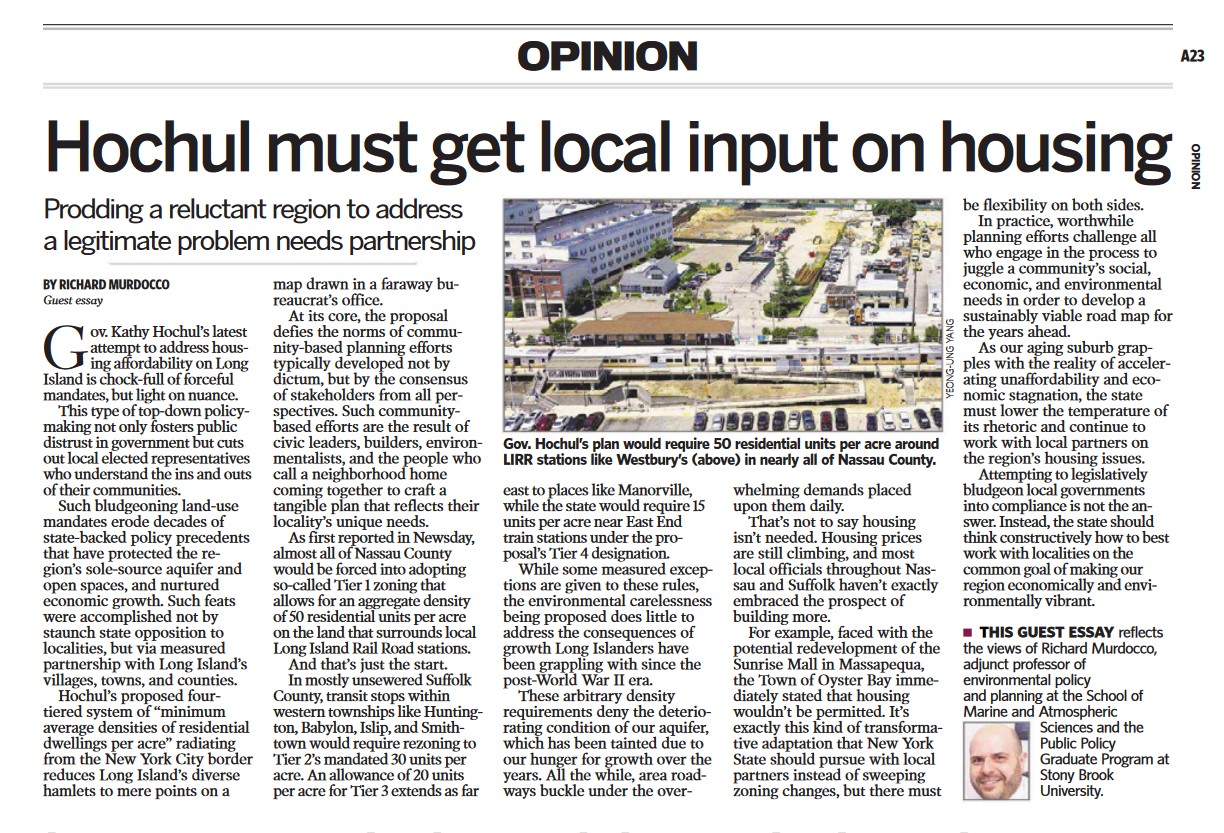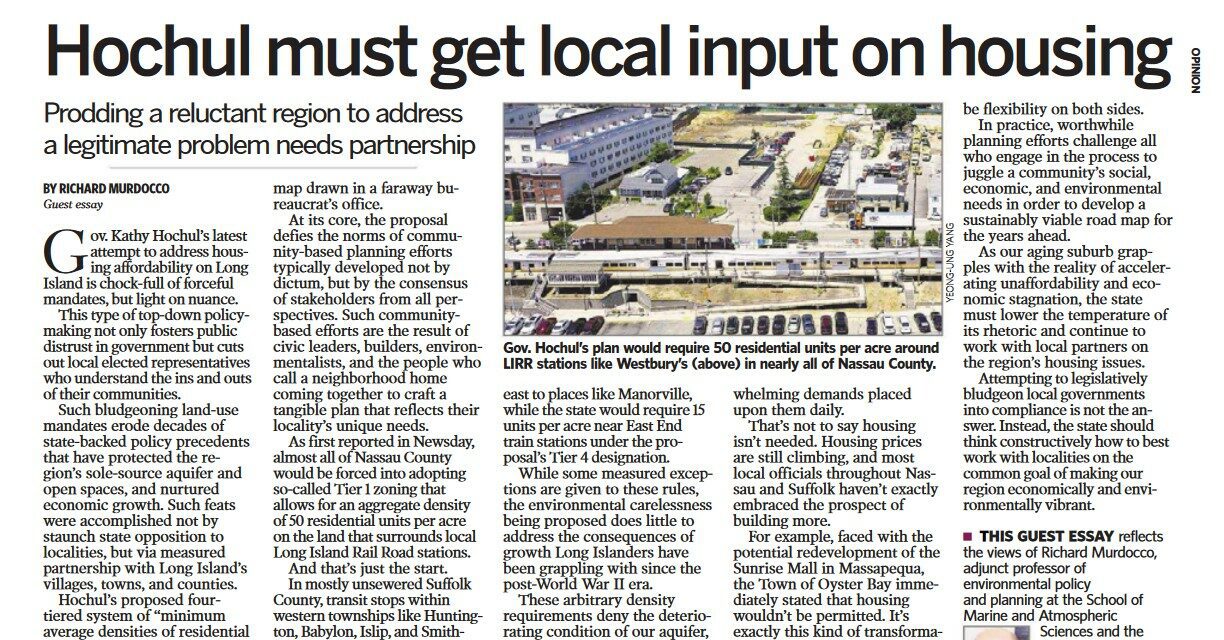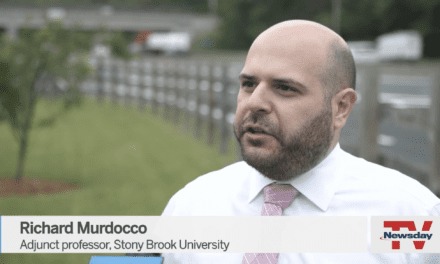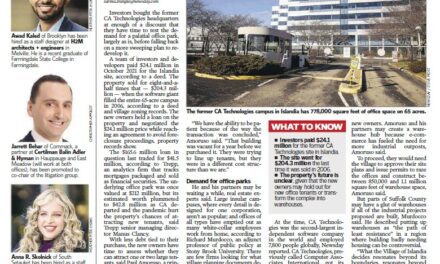The following op-ed was published in the Tuesday, February 7, 2023 edition of Newsday on page A23. You can read the original here.
Prodding a reluctant region to address a legitimate problem needs partnership
BY RICHARD MURDOCCO
Gov. Kathy Hochul’s latest attempt to address housing affordability on Long Island is chock-full of forceful mandates, but light on nuance.
This type of top-down policymaking not only fosters public distrust in government but cuts out local elected representatives who understand the ins and outs of their communities.
Such bludgeoning land-use mandates erode decades of state-backed policy precedents that have protected the region’s sole-source aquifer and open spaces, and nurtured economic growth. Such feats were accomplished not by staunch state opposition to localities, but via measured partnership with Long Island’s villages, towns, and counties.
Hochul’s proposed four-tiered system of “minimum average densities of residential dwellings per acre” radiating from the New York City border reduces Long Island’s diverse hamlets to mere points on a map drawn in a faraway bureaucrat’s office.
At its core, the proposal defies the norms of community-based planning efforts typically developed not by dictum, but by the consensus of stakeholders from all perspectives. Such community-based efforts are the result of civic leaders, builders, environmentalists, and the people who call a neighborhood home coming together to craft a tangible plan that reflects their locality’s unique needs.
As first reported in Newsday, almost all of Nassau County would be forced into adopting so-called Tier 1 zoning that allows for an aggregate density of 50 residential units per acre on the land that surrounds local Long Island Rail Road stations.
And that’s just the start.

Pictured: The Westbury LIRR station and its surroundings. Almost all of Nassau County would fall uner Tier 1 zoning, which allows for an aggregate density of 50 residential units per acre around Long Island Rail Road stations. (Credit: Yeong-Ung Yang)
In mostly unsewered Suffolk County, transit stops within western townships like Huntington, Babylon, Islip, and Smithtown would require rezoning to Tier 2’s mandated 30 units per acre. An allowance of 20 units per acre for Tier 3 extends as far east to places like Manorville, while the state would require 15 units per acre near East End train stations under the proposal’s Tier 4 designation.
While some measured exceptions are given to these rules, the environmental carelessness being proposed does little to address the consequences of growth Long Islanders have been grappling with since the post-World War II era.
These arbitrary density requirements deny the deteriorating condition of our aquifer, which has been tainted due to our hunger for growth over the years. All the while, area roadways buckle under the overwhelming demands placed upon them daily.
That’s not to say housing isn’t needed. Housing prices are still climbing, and most local officials throughout Nassau and Suffolk haven’t exactly embraced the prospect of building more.
For example, faced with the potential redevelopment of the Sunrise Mall in Massapequa, the Town of Oyster Bay immediately stated that housing wouldn’t be permitted. It’s exactly this kind of transformative adaptation that New York State should pursue with local partners instead of sweeping zoning changes, but there must be flexibility on both sides.
In practice, worthwhile planning efforts challenge all who engage in the process to juggle a community’s social, economic, and environmental needs in order to develop a sustainably viable road map for the years ahead.
As our aging suburb grapples with the reality of accelerating unaffordability and economic stagnation, the state must lower the temperature of its rhetoric and continue to work with local partners on the region’s housing issues.
Attempting to legislatively bludgeon local governments into compliance is not the answer. Instead, the state should think constructively how to best work with localities on the common goal of making our region economically and environmentally vibrant.
This guest essay reflects the views of Richard Murdocco, adjunct professor of environmental policy and planning at the School of Marine and Atmospheric Sciences and the Public Policy Graduate Program at Stony Brook University.














